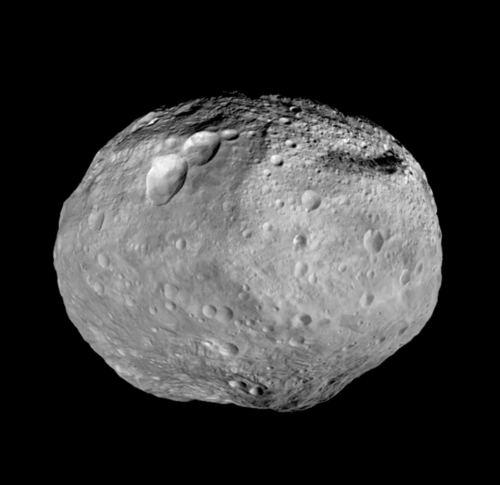Department of Earth Sciences
Service Navigation
Mission: Dawn | Experiment: Framing Camera
The journey through the inner solar system was successfully completed by Dawn after four years and in July 2011 its first target, the asteroid Vesta, was reached. Vesta has the shape of an ellipsoid (286x279x223 km) and orbits the sun at a distance of approximately 350 million kilometers. For one year, the probe collected scientific data of Vesta whereby the cameras on board took numerous images. These obtained views mapped surface details with a resolution of up to 20 m per pixel. Vesta’s surface was nearly completely covered by the camera during the spacecraft’s one-year-long sojourn.
After that, the spacecraft went on a two-and-a-half-years journey to the second mission target. The dwarf planet Ceres is the largest object (483x481x445 km) in the asteroid belt and almost unchanged in size and shape since its formation in the early period of the solar system. Therefore, the asteroid offers a good research object with regard to the mission purposes. From April 2015 until November 2018, Dawn's instruments continuously transmitted data about the properties of the surface of Ceres from various orbits, before the spacecraft was put into a stable orbit around Ceres by the engineers.
The camera experiment on board Dawn is the Framing Camera (FC) which was developed in cooperation between the Max Planck Institute for Solar System Research and the German Aerospace Center (DLR). The Planetary Sciences and Remote Sensing Group of FU Berlin is involved in the scientific processing and evaluation of the image data.
One of the main tasks of the research group at FU Berlin is the development of a chronostratigraphic system. The dating of different landforms by determining the frequency distribution of crater sizes provides the scientists with important information to better understand the geological evolution and impact processes at Vesta.
The detailed insight into meteorite impacts at asteroids makes it possible to establish corresponding coherences with the evolution of meteorite impacts in the young solar system. Of special interest in this case is also the examination of the material distribution of rock forming minerals and water ice. On behalf of the Dawn Science Team the researchers at FU Berlin create geologic maps and date Vesta’s and Ceres´ surface.
RELATED LINKS MISSION DAWN
ARTICLES TO DOWNLOAD
FINANCIAL SUPPORT • PROJECT FUNDING
• Reference number 50 OW 1505
• Funded by the Space Administration of the German Aerospace Centre (DLR) with means of the Federal Ministry for Economic Affairs and Energy.
• Latest Term: Nov 01, 2015 - Aug 31, 2020


